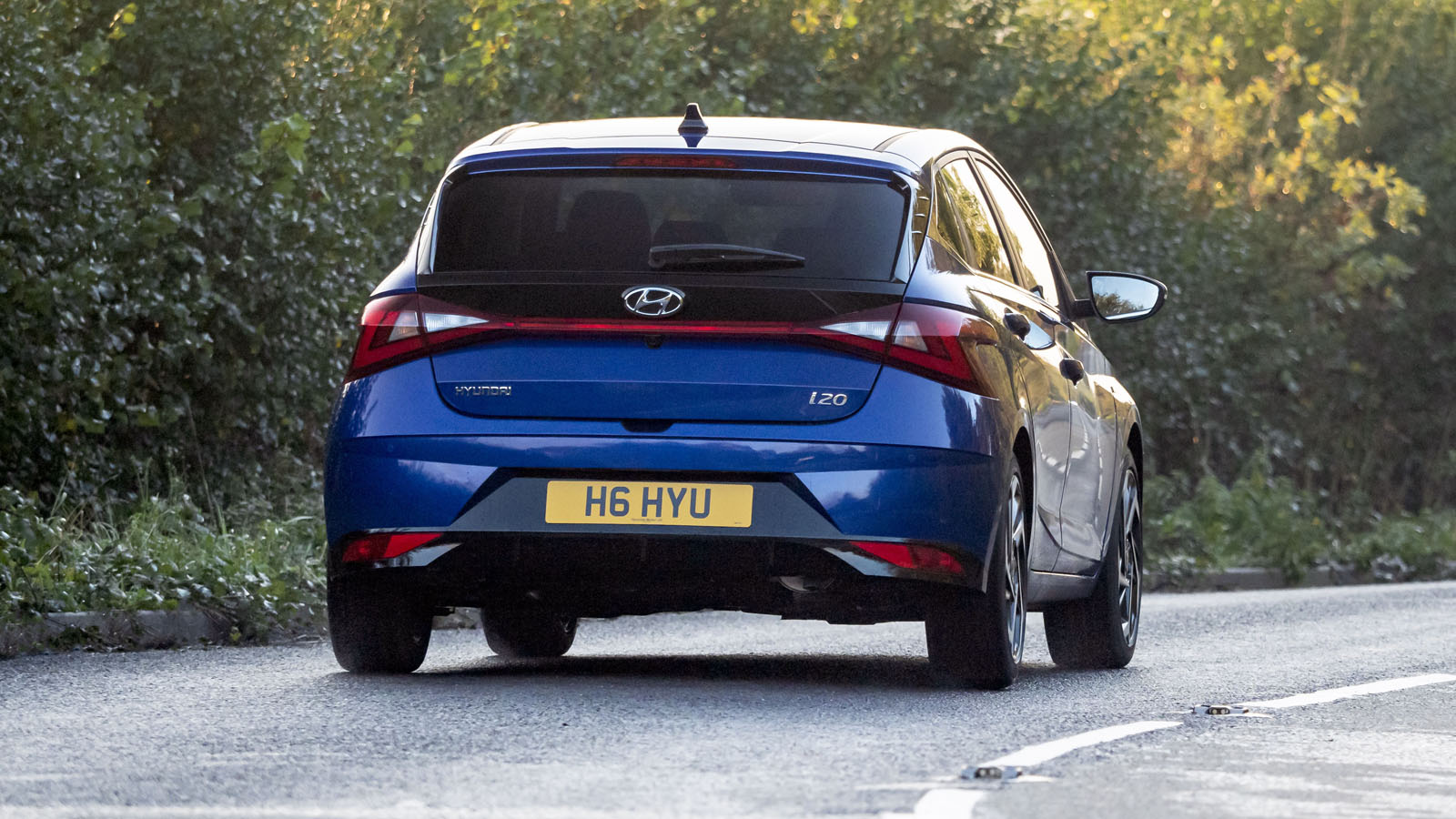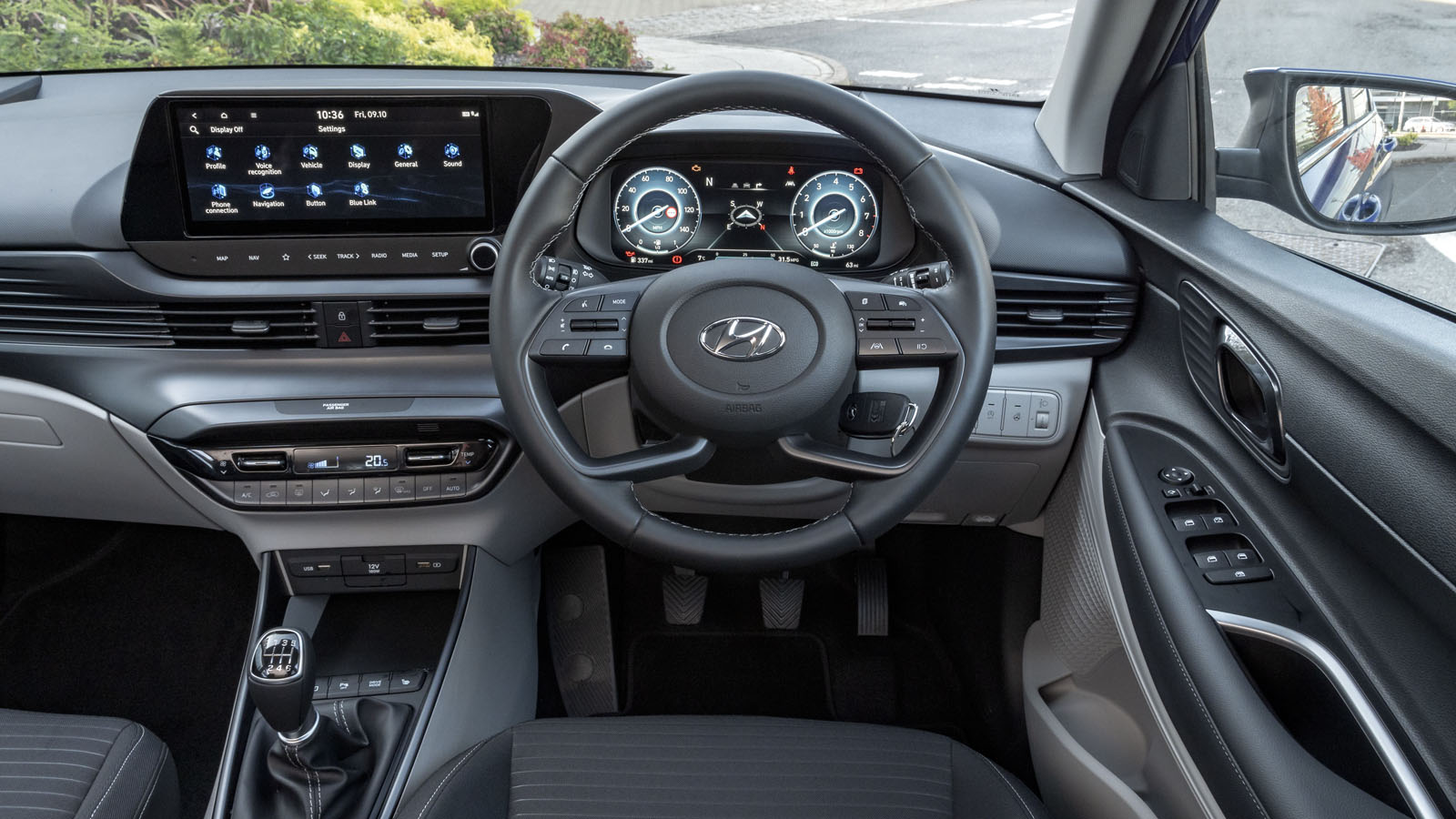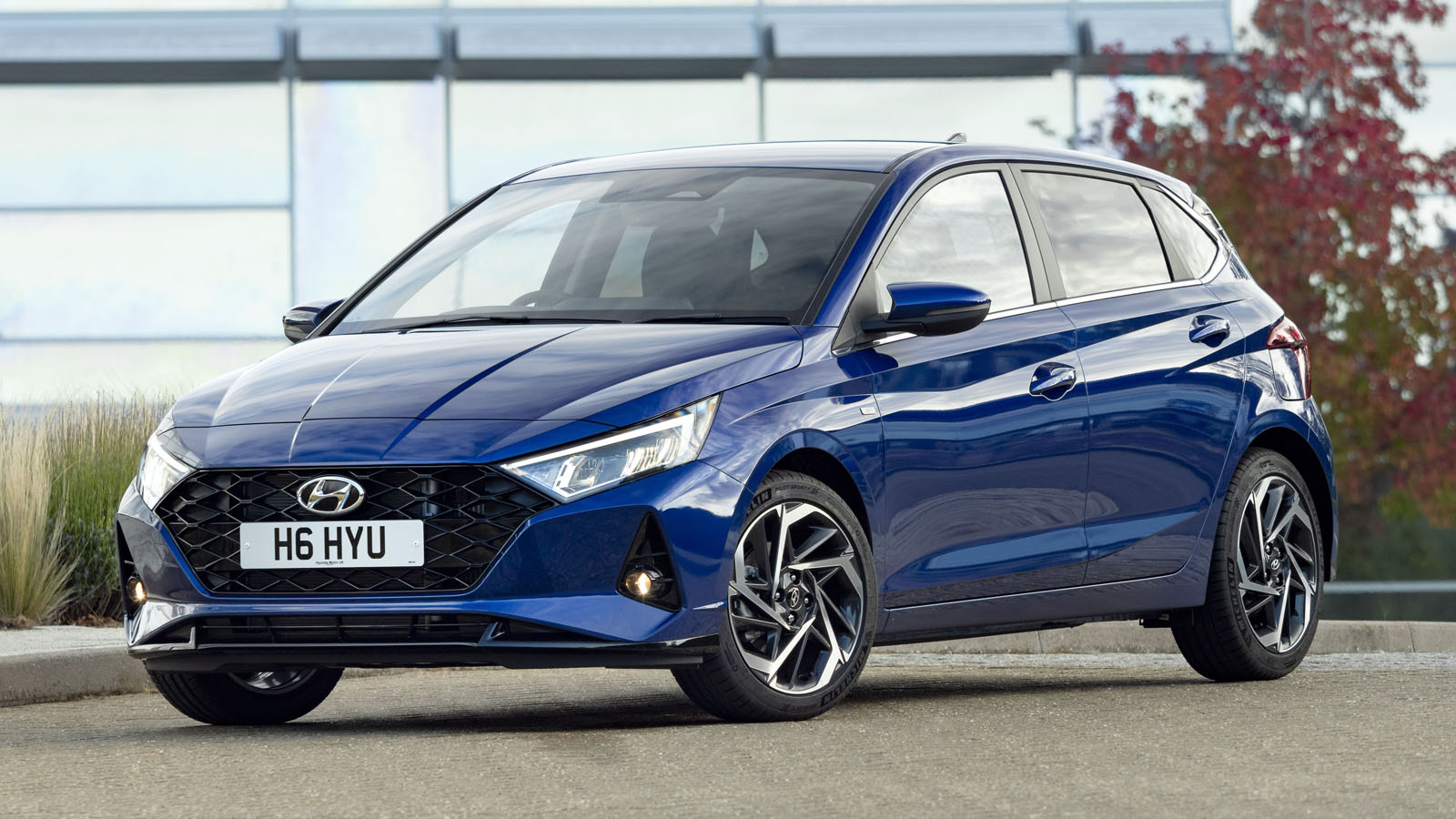
Interior
What is it like on the inside?
Every i20 gets a 10.25-inch screen instead of conventional dials and instruments. It’s not the most configurable display out there, but you can cycle through trip/navigation/media info easily enough using the buttons on the rather large leather-wrapped steering wheel, and the design changes depending on which of the three drive modes you’re in.
In base-spec cars it’s paired with an eight-inch centre touchscreen, but you’ll want to go for a mid- or high-spec car to get the 10.25-inch widescreen. The graphics are crisp and it’s easy enough to prod, pinch and swipe your way through the menu system. Both systems get Android Auto/Apple CarPlay, but only the higher-spec system gets Hyundai’s clever “Bluelink” suite of connected services.
As for the design – the i20’s cabin does look good from afar. Especially with the big touchscreen and automatic climate controls. But up close it’s done precisely no favours by Hyundai’s choice of materials. The smooth plastic across the bottom of the dashboard looks and feels quite cheap. The textured stuff elsewhere is better and the overall construction feels solid and hardwearing, but the i20 just doesn’t feel as upmarket inside as many of the cars it competes with.
That said, clever packaging and a 10mm longer wheelbase mean the i20 is more spacious than the car it replaces. There’s plenty of space in the back for a couple of adults to sit comfortably (there’s even a USB port back there for convenient charging), without their knees jammed hard-up against the backs of the front seats, and the boot is an impressive 351-litres. That’s more than you get in a Ford Fiesta or Peugeot 208.
Featured







